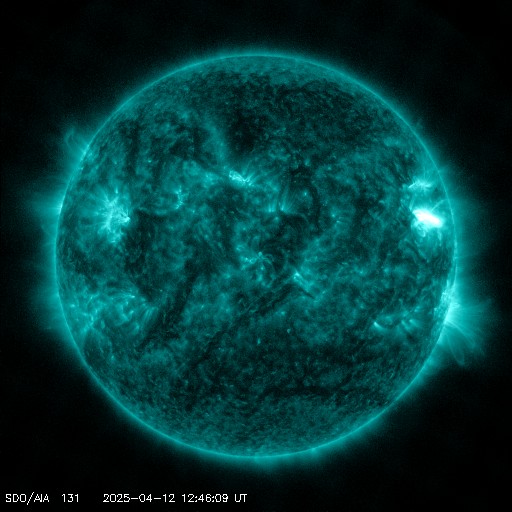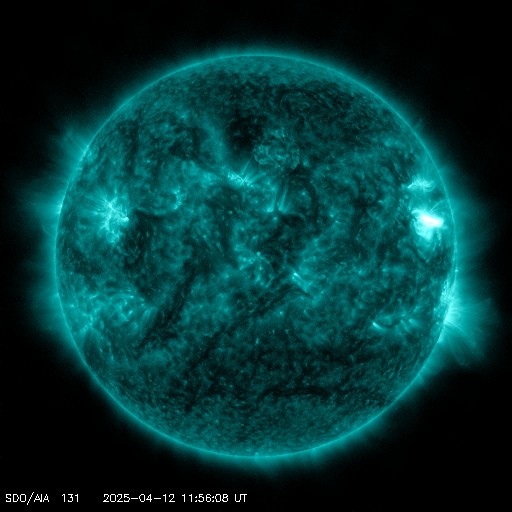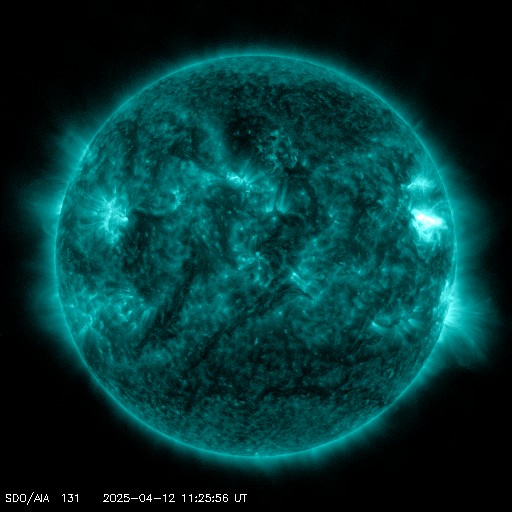Viewing archive of Wednesday, 26 December 2001
Solar activity report
Any mentioned solar flare in this report has a scaling factor applied by the Space Weather Prediction Center (SWPC). Because of the SWPC scaling factor, solar flares are reported as 42% smaller than for the science quality data. The scaling factor has been removed from our archived solar flare data to reflect the true physical units.
Report of Solar-Geophysical Activity 2001 Dec 26 2200 UTCPrepared by the NOAA © SWPC and processed by SpaceWeatherLive.com
Joint USAF/NOAA Report of Solar and Geophysical Activity
SDF Number 360 Issued at 2200Z on 26 Dec 2001IA. Analysis of Solar Active Regions and Activity from 25-2100Z to 26-2100Z
Solar activity was high. Region 9742 (N12W68) produced
an M7/1b proton flare at 26/0540 UTC. The flare was associated with
strong type II/IV sweeps and a 2600 sfu burst at 2695 MHz. This
Region also produced several other flares this past day including an
M1/1f at 26/1226 UTC and an M1/Sf at 26/1718 UTC. Small flares also
occurred in Regions 9748 (S10W48), 9751 (N04E04), and 9754 (S09E24).
Several small new regions were numbered -- 9756 (S28E72), 9757
(S09E02), 9758 (N13E20), 9759 (N17E28), 9760 (N06E35), and 9761
(N09E75).
IB. Solar Activity Forecast
Solar activity is expected to be
moderate to high. Another major flare is possible in Region 9742.
M-class flares are also possible in Regions 9748, 9751, and 9754.
IIA. Geophysical Activity Summary 25-2100Z to 26-2100Z
The geomagnetic field was quiet to unsettled. Greater than 100 MeV
and 10 MeV proton events occurred in association with the major
flare discussed in part IA. The greater than 100 MeV event started
at 26/0555 UTC, reached a peak of 50 pfu at 26/0720 UTC, and dropped
below the 1 pfu event threshold at 26/1920 UTC. The greater than 10
MeV event started at 26/0605 UTC, reached a peak of 779 pfu at
26/1115 UTC, and continues in progress (current flux about 115 pfu).
This particle event was also associated with a GLE starting at about
26/0600 UTC and reaching a maximum at about 26/0620 UTC (8% at
Apatity, Oulu, and McMurdo, and 2% at Moscow). A Polar Cap
Absorption event (PCA) also occurred, reaching a peak absorption of
about 9 dB at 26/1115 UTC and continuing in progress at this
writing.
IIB. Geophysical Activity Forecast
The geomagnetic field is
expected to be quiet to unsettled until the Earth encounters the CME
associated with today's major flare. Active to storm conditions are
expected to begin on 28 or 29 December. The bulk of the CME appeared
to be directed to the west which increases the uncertainty of the
begin time and eventual impact to the geomagnetic field.
III. Event Probabilities 27 Dec to 29 Dec
| Class M | 80% | 80% | 80% |
| Class X | 10% | 10% | 10% |
| Proton | 99% | 75% | 25% |
| PCAF | in progress | ||
IV. Penticton 10.7 cm Flux
Observed 26 Dec 268 Predicted 27 Dec-29 Dec 265/260/255 90 Day Mean 26 Dec 217
V. Geomagnetic A Indices
Observed Afr/Ap 25 Dec 011/008 Estimated Afr/Ap 26 Dec 008/006 Predicted Afr/Ap 27 Dec-29 Dec 008/008-030/012-015/020
VI. Geomagnetic Activity Probabilities 27 Dec to 29 Dec
| A. Middle Latitudes | |||
|---|---|---|---|
| Active | 15% | 50% | 30% |
| Minor storm | 05% | 25% | 10% |
| Major-severe storm | 05% | 10% | 10% |
| B. High Latitudes | |||
|---|---|---|---|
| Active | 20% | 50% | 50% |
| Minor storm | 10% | 30% | 20% |
| Major-severe storm | 05% | 15% | 10% |
All times in UTC
Latest news
Latest forum messages
AR 4055 43Filaments and prominences 5May storm revisited 1CME 19Filaments and prominences (old topic) 756
More topicsSupport SpaceWeatherLive.com!
A lot of people come to SpaceWeatherLive to follow the Sun's activity or if there is aurora to be seen, but with more traffic comes higher server costs. Consider a donation if you enjoy SpaceWeatherLive so we can keep the website online!

Space weather facts
| Last X-flare | 2025/03/28 | X1.1 |
| Last M-flare | 2025/04/12 | M2.3 |
| Last geomagnetic storm | 2025/04/06 | Kp5 (G1) |
| Spotless days | |
|---|---|
| Last spotless day | 2022/06/08 |
| Monthly mean Sunspot Number | |
|---|---|
| March 2025 | 134.2 -20.4 |
| April 2025 | 139.5 +5.3 |
| Last 30 days | 136.6 -3.5 |





